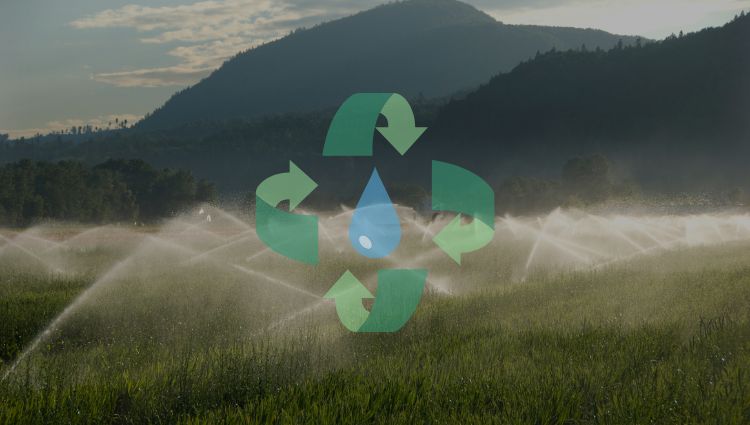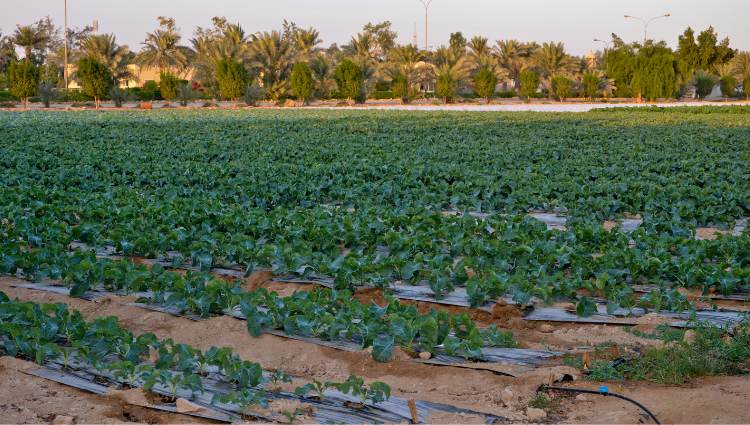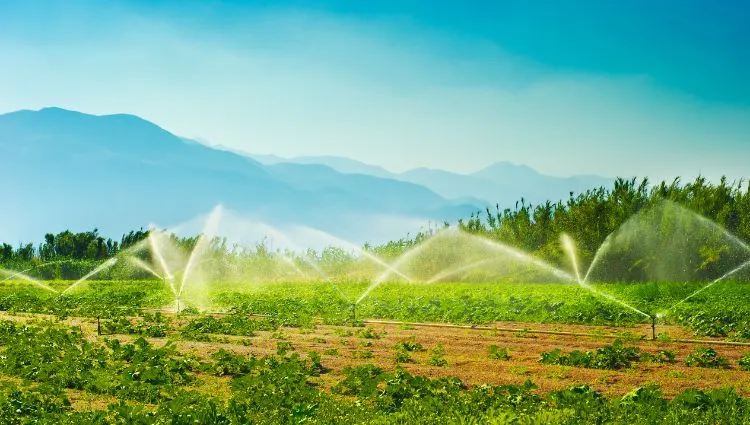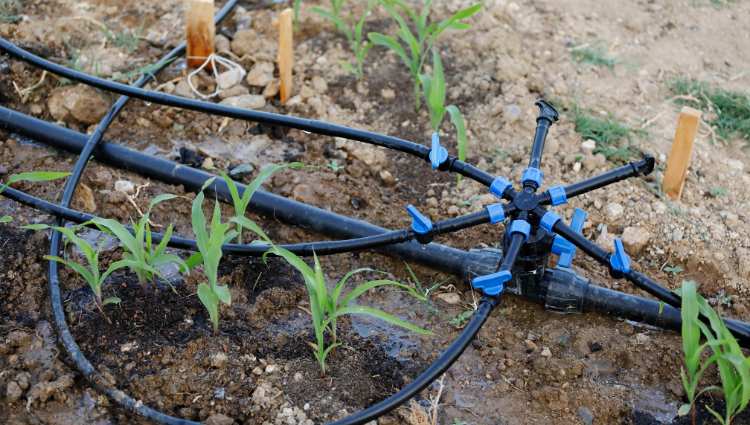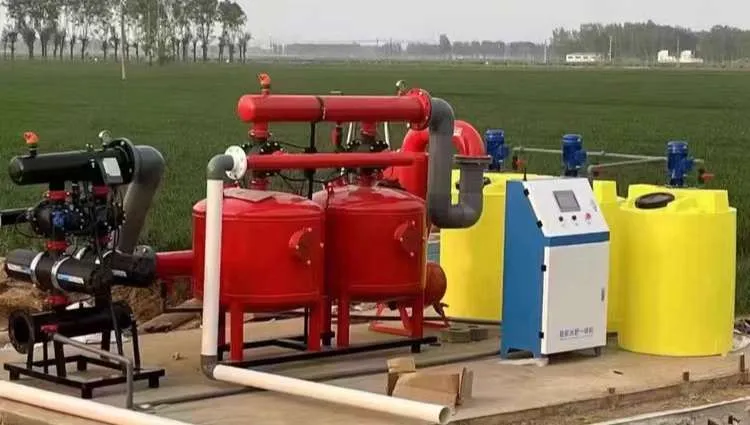目录
In greenhouse crop cultivation, carbon dioxide is a very important participant, because it is an essential raw material for the growth of plants and crops. Under light conditions, plants can carry out photosynthesis through chloroplasts to synthesize carbohydrates and oxygen. You can think of carbon dioxide as the “food” for plant growth—its importance goes without saying.
This post will explain in detail from four aspects: the changing patterns of carbon dioxide in greenhouses, why it is necessary to supplement carbon dioxide for crops in greenhouses, the different needs of various crops for carbon dioxide, and how to increase the concentration of carbon dioxide inside the greenhouse.
The Changing Patterns of Carbon Dioxide in Greenhouses

Normally, the concentration of carbon dioxide in the atmosphere is relatively stable, generally around 380 ppm. But in a greenhouse, since it is a relatively enclosed space, the concentration of carbon dioxide varies greatly between day and night.
At night, crops need to carry out respiration. 此外, microbial activity in the soil and the decomposition of organic matter release carbon dioxide. This process continues until just before sunrise, and the concentration of carbon dioxide in the greenhouse reaches its peak. 此时, its concentration can be about twice as high as outside the greenhouse.
When the sun rises, crops begin to carry out photosynthesis, and the carbon dioxide concentration in the greenhouse starts to decrease. By noon, when the sunlight is strongest, the concentration drops sharply due to the continued strengthening of photosynthesis, and it can even fall to 80–150 ppm.
此外, the concentration of carbon dioxide in the greenhouse varies with different seasons. 例如, in winter, the solar radiation is low, and the greenhouse is often kept sealed to preserve heat, which prevents air exchange between the inside and outside. 因此, carbon dioxide inside the greenhouse cannot be replenished, and its concentration becomes relatively low.
所以, in seasons with different levels of solar radiation, the methods of handling carbon dioxide in the greenhouse will also differ. People need to understand these patterns and then scientifically and efficiently supplement carbon dioxide for the greenhouse.
Why It Is Necessary to Supplement Carbon Dioxide for Crops in Greenhouses

In the enclosed environment of a greenhouse, the indoor carbon dioxide concentration is affected by factors such as ventilation conditions, light intensity, and crop planting density, often leading to large fluctuations in concentration and making it difficult to maintain within a suitable range.
例如, on sunny days, after crops consume large amounts of carbon dioxide, the concentration inside the greenhouse can drop below 200 ppm, far lower than the normal level in the atmosphere. This puts plants in a state of “carbon dioxide hunger,” which seriously limits the efficiency of photosynthesis.
所以, it is necessary to artificially regulate the carbon dioxide content to provide the most suitable growing environment for crops and improve their yield and quality.
Research has shown that when the carbon dioxide concentration in a greenhouse is increased to 800–1200 ppm, the photosynthesis efficiency of most green plants can be improved by 30%–50%. A suitable carbon dioxide concentration brings the following benefits to crops:
Improves Photosynthesis Efficiency
The efficiency of photosynthesis is influenced by water, light, and carbon dioxide concentration. After providing sufficient water and light to the crops, moderately increasing the carbon dioxide concentration can significantly improve their photosynthetic efficiency.
Speeds Up Crop Growth
Adequate carbon dioxide can promote the growth of plant stems and leaves, accelerating the crop growth cycle.
Increases Crop Yield and Quality
After increasing the carbon dioxide concentration, the yield of vegetables can be increased by 15%–30%. In greenhouse tomato cultivation, increasing carbon dioxide improves the vitamin and sugar content of tomatoes. The plumpness, taste, plant height, and disease resistance of the tomatoes are also enhanced.
Improves Crop Water Use Efficiency
In a high-carbon-dioxide environment, the stomatal opening of plants becomes smaller and transpiration weakens, which improves water use efficiency. This feature is especially important in areas with scarce water resources.
Different Crops’ Requirements for Carbon Dioxide

There are differences between different plants, and their demand for carbon dioxide concentration is also not the same. 例如, for leafy vegetables (such as spinach, lettuce, ETC。), their suitable carbon dioxide concentration is 800–1000 ppm. Workers can increase the carbon dioxide concentration for them in the morning and afternoon when there is sufficient light, which can improve the photosynthetic efficiency of the leaves, promote leaf enlargement, and increase yield.
For fruit-bearing crops (such as tomatoes, 黄瓜, ETC。), their suitable carbon dioxide concentration is 1000–1200 ppm. During the flowering and fruit-setting period, increasing the carbon dioxide concentration can significantly improve the quality of the fruits.
For small fruit crops (such as strawberries, ETC。), their suitable carbon dioxide concentration is 800–1000 ppm. So during their flowering and fruit growth period, increasing the carbon dioxide concentration can enhance the sugar content and taste of the fruit.
By understanding the habits of these different crops, we can increase the carbon dioxide concentration in a targeted way to achieve the best results.
How to Increase Carbon Dioxide Concentration in Greenhouses

From the previous content, we already understand the importance of carbon dioxide for crops. So how can we increase the carbon dioxide concentration in a greenhouse? Below are some commonly used methods for your reference.
Ventilation Method
This is the most direct approach. The main reason for low carbon dioxide concentration in a greenhouse is its enclosed environment. So you can allow natural ventilation or install ventilation equipment to promote air circulation between the inside and outside, which helps equalize the carbon dioxide concentration in the greenhouse with that of the outside atmosphere.
This method is simple to operate and low-cost, making it suitable for small-scale greenhouse cultivation. 然而, it also has limitations—it can only bring the carbon dioxide level up to the normal atmospheric concentration, which is still lower than the optimal level needed for photosynthesis.
此外, this method is affected by weather conditions. 例如, in winter, greenhouses need to retain heat, so frequent ventilation is not ideal.
Fertilization Method
Applying fertilizers that can produce carbon dioxide into the soil can also help supplement carbon dioxide levels in the greenhouse. 然而, when applying fertilizer, make sure to evenly spread the granules around the plants and keep the soil moisture at about 80%, which is more conducive to microbial fermentation and carbon dioxide production.
This method is simple and easy to implement, but its limitation is that it’s hard to precisely control the carbon dioxide concentration. Even increasing the amount of fertilizer may not meet the crops’ optimal carbon dioxide demand.
Chemical Method
This method works by using a chemical reaction between acid and carbonate to produce carbon dioxide. The commonly used materials are sulfuric acid and ammonium bicarbonate fertilizer, which react to generate carbon dioxide and ammonium sulfate fertilizer. It does not produce other substances harmful to crops, making it a very safe method.
Combustion Method
By burning coal or other hydrocarbon fuels, carbon dioxide can be produced. 在此过程中, harmful gases such as sulfur dioxide need to be filtered out, and the purified carbon dioxide can then be delivered into the greenhouse through pipelines.
此外, biogas, propane, and alcohol can also be used as fuels and burned to generate carbon dioxide.
These methods are also relatively simple, but the cost is higher and they may produce harmful substances, so they are not commonly used.
Liquid Carbon Dioxide Supplementation Method
Liquid carbon dioxide cylinders can be purchased on the market and used directly to supply carbon dioxide to greenhouses. This method is safe and convenient to operate, and the concentration is adjustable and flexible. 然而, the cost is relatively high, making it more suitable for large-scale greenhouse cultivation and high-value crops.
Optimizing Plant Layout
This method does not directly increase the carbon dioxide concentration in the greenhouse. 然而, by reasonably planning the planting density and arrangement of crops, it can improve the efficiency of carbon dioxide absorption by the plants.
Optimizing the layout allows each plant to fully receive sunlight and promotes air circulation, which helps with the diffusion and absorption of carbon dioxide.
Final Thoughts
通过本文, you should now understand why carbon dioxide concentration is so important for greenhouse crop cultivation. In addition to carbon dioxide affecting crop yield and quality, optimizing irrigation methods is also very important.
Don’t forget—photosynthesis requires not only carbon dioxide but also water! Water is also essential, and making good use of water resources for irrigation is something that must be done. If you’re interested in greenhouse irrigation, 你可以 read this article. Hope it will be helpful to you!
最后, 请允许我介绍我们的公司. Rainfaun是一家总部位于中国的灌溉产品制造商. 我们生产和导出产品,例如 滴灌 和 洒水系统, 包括 滴灌阀, 滴灌配件, 滴管, 滴胶带, 滴, 箭头滴落木桩, 洒水器, 微洒水器, 雨枪, 等等. 您可以找到信息 关于Rainfaun 和 我们的产品 在此网站上.
如果您想与我们合作, 你可以 点击这里 填写表格.
作者: 迈克尔
编辑: 迈克尔
内容审阅者: 迈克尔


